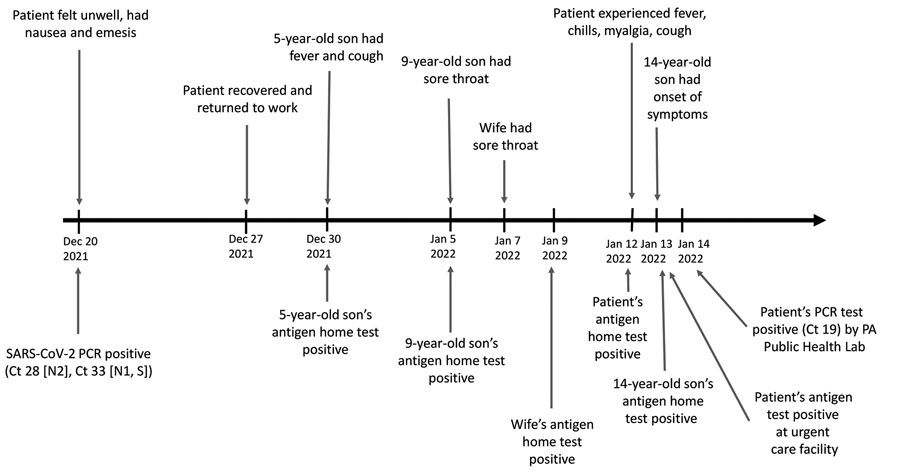Volume 28, Number 9—September 2022
Research Letter
Infection with SARS-CoV-2 Omicron Variant 24 Days after Non-Omicron Infection, Pennsylvania, USA
Figure

Figure. Timeline of a vaccinated healthcare worker who had positive viral tests for SARS-CoV-2 infection 24 days apart (December 20, 2021, and January 12, 2022), Pennsylvania, USA. Image shows symptoms and test results for the patient and household members. The patient and his wife were up to date with Pfizer-BioNTech (https://www.pfizer.com) SARS-CoV-2 vaccines (2 doses of primary series and 1 booster dose). Both eligible children (9-year-old and 14-year-old sons) were fully vaccinated against SARS-CoV-2. Ct, cycle threshold; N1, nucleocapsid 1 protein; N2, nucleocapsid 2 protein; PA, Pennsylvania; S, spike protein.
Page created: July 15, 2022
Page updated: August 19, 2022
Page reviewed: August 19, 2022
The conclusions, findings, and opinions expressed by authors contributing to this journal do not necessarily reflect the official position of the U.S. Department of Health and Human Services, the Public Health Service, the Centers for Disease Control and Prevention, or the authors' affiliated institutions. Use of trade names is for identification only and does not imply endorsement by any of the groups named above.